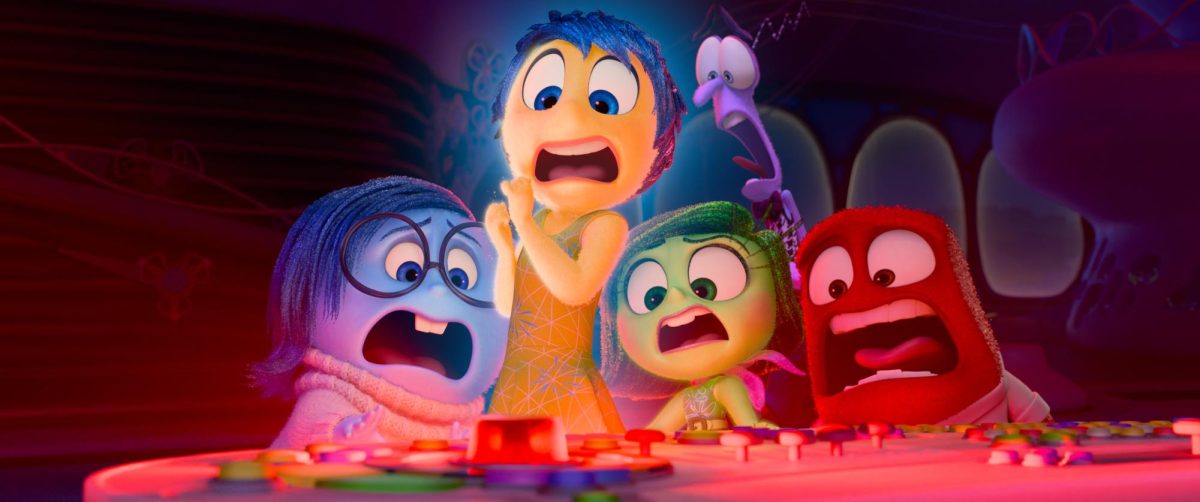Nine years ago, Pixar invited audiences into the mind of 11-year-old Riley to meet her emotions: Joy, Sadness, Fear, Disgust and Anger. While the personification of emotions onscreen was not an entirely new idea, “Inside Out” was the most colorful, creative depiction of the concept to date. For many, the animated film is a favorite of the Pixar collection.
Nearly a decade later, Pixar has released “Inside Out 2.” While children who watched the original in theaters have grown up into young adults, Riley has only grown two years. The sequel finds her at 13 preparing for her first year of high school. During this time, the emotions face a new great danger: Puberty. With this comes a new team of emotions including Ennui, Embarrassment, Envy and Anxiety who are set on building a new Riley without the guidance of the old emotions.
Old Friends and Old Feelings
With so much time having passed, one might worry “Inside Out 2” would have a difficult time picking up where it left off. Luckily, within minutes the film easily guides audiences back into the world through an exhilarating hockey match that re-introduces us to the characters and how Riley’s mind works. Without any effort, we are once again fully endeared by each emotion and the love Riley’s family shares.
The opening also shows off the team dynamic of all the emotions, a highlight of this sequel. While in the first film our quintet of feelings were broken up, here we get to see them all working together for almost the whole runtime. That team dynamic shines and keeps the film at high energy even during its more somber moments.
Anxiety Takes the Stage
As for the new emotions, each one has their standout moment, but the real stars are Maya Hawke as Anxiety and Ayo Edebiri as Envy. While Envy never takes over the screen, her small, cute design is a perfect match for Edebiri’s powerfully naive and curious voice work. Hawke as Anxiety is the real show-stopper, playing the out-of-control antagonistic force that sends the film into its main story.
“Inside Out 2” would probably be too similar to its predecessor if it weren’t for the inclusion of Anxiety. While the balance of childhood happiness and sorrow defined the tone of the original film, the sequel is a far more tense experience reflecting the non-stop panic of being a teenager. For better or worse, “Inside Out 2” is filled with awkward situations that nearly anyone who has been through that transition from child to adult can relate to. A constant cringe factor subsists throughout the runtime as we watch Riley make wince-inducing choices to make friends with “cool high-schoolers.”
All of these choices are controlled by the manic Anxiety who is infuriating but also undeniably understandable. For every horrible situation Anxiety puts Riley in, viewers will be able to recall a time they found themselves in a similar situation to be “good enough” to someone else.
Maturing Themes
“Inside Out 2” never has a cry-your-eyes-out moment like the sacrifice of Bing Bong in the first film but its themes are certainly more complex and mature, fitting for an older Riley. The film’s chaotic and heart-pounding third act is not resolved in a perfect package and leaves Riley in a place that feels more realistic than ever before. It’s difficult to accept the whole self, flaws and all, but “Inside Out 2” reminds viewers that we must love every part of ourselves.
“Inside Out 2” can be a bit too reminiscent of the first film at times and is not quite as biting as it could have been for a story about the pain and inner struggles of growing up into high school. However, the sequel is still a frequently funny and heartfelt experience that is visually splendid. It’s exciting spending time with emotions old and new and seeing how the movie will depict the strange, complicated thoughts, ideas and feelings all of us have. “Inside Out 2” is another winner for Pixar and one that should be seen by all, young and old.



